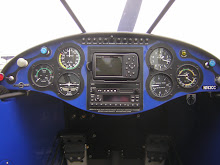As the time for my checkride draws nearer, my anxiety level continues to increase. Prior to this Saturday morning my confidence level was close to five on a scale of one-to-ten. Although the practice revealed areas I needed to improve, my confidence level increased enough to counteract my fear of failure and compose my state of mind. The flight began with a smooth take-off and continued as such until my instructor asked me to report my first checkpoint on our way to Shelby County Airport. All of my previous cross country trips were very organized and uneventful. However, on this practice run, I found myself scrambling to determine where we were. This came as a result of not having fully been able to prepare my flight plan before departure. Luckily this was practice (which I am told makes perfect). After determining our location I practiced some steep turns, slow flight and stalls. The power off stall were uneventful, but power on stalls were a little more exciting. After slowing the plane to 50mph and dropping the RPM to 1500, I applied full throttle and entered a climbing right turn. During the middle of the turn I became too focused outside and neglected the turn coordinator. Once the airplane was stalled the left wing dropped and we entered the incipient phase of a spin. In my minds eye I saw the acronym P.A.R.E.. As I attempted to bank right to get us out of the spin I realized the ailerons were not responding. At this point I remembered "opposite rudder" (the "R" in P.A.R.E.) and heard my instructor saw opposite rudder. Wow! I nearly soiled myself. As we left the incipient phase, I inched the nose up, released opposite rudder and applied throttle to regain straight and level flight. What a great relief and learning experience this was. I am grateful to have had been instructed well enough to realize what I was supposed to do. I strongly recommend training for spins so that you may realize what it feels like to enter one.
After all of the aerial maneuvers, it was time to hone my landing skills. We practice short and soft-field landings. My first shortfield landing was a little rough and would not have passed, but the second one was considered passing. After a few more touch-and-go's I was introduced to wheel landings for the first time. For this type of landing the approach is made at 70 mph compared to the normal approach speed of 55 mph. The plane it held above the runway significantly longer as you gingerly move the controls to slowly fly the plane to the runway. Once the wheels have kissed the runway, power is fully reduced and brakes are slowly applied. Once slowed down the stick is brought back to lower the tail and gain better steering. After a few tries I began to get a hold of the technique and was able to execute an acceptable wheel landing. After this, my instructor demonstrated a poor wheeling landing wherein he threw the stick forward to imitate a pilot who might be impatient and wants to get on the ground sooner than he should. I will be uploading a nice video of this demo sometime tonight.
With this 1.5hrs of practice I was able to see what needs to be improved. Although my confidence level did not increase too much, I was able to realize what needs to be improved so that I am not surprised when it comes time to take the checkride. Look for videos of practiced landings within the next two weeks!
Subscribe to:
Post Comments (Atom)







No comments:
Post a Comment